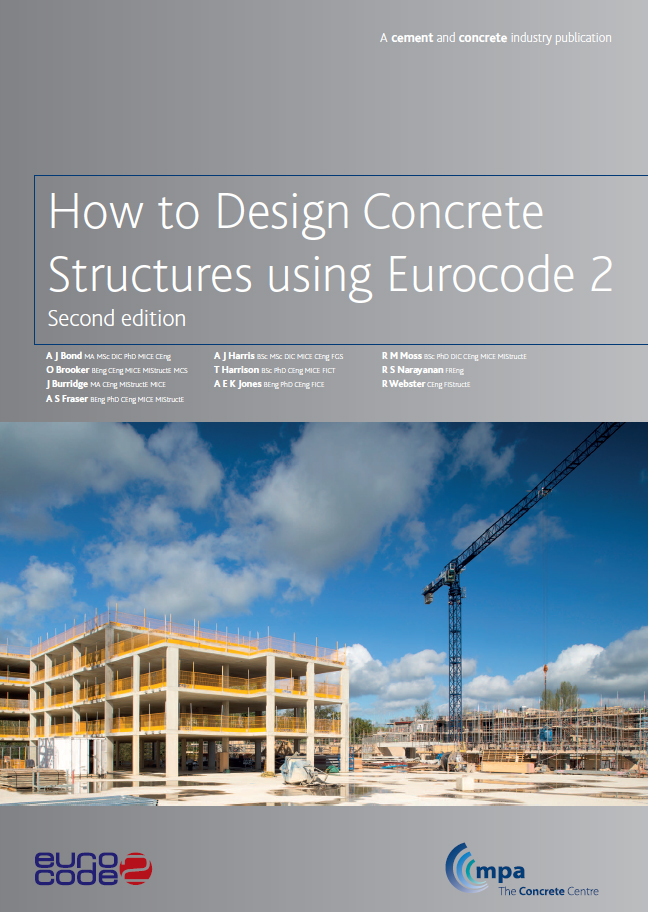In the eurocode series of European standards (EN) related to construction, Eurocode 2: Design of concrete structures (abbreviated EN 1992 or, informally, EC 2) specifies technical rules for the design of concrete, reinforced concrete and prestressed concrete structures, using the limit state design philosophy. It was approved by the European Committee for Standardization (CEN) on 16 April 2004 to enable designers across Europe to practice in any country that adopts the code.
- Eurocode 2. Design Of Concrete Structures. Liquid Retaining And Containing Structures
- International Building Code Concrete
- Eurocode 3 Pdf
Brussels, 18-20 February 2008 – Dissemination of information workshop 1 EUROCODES Background and Applications EN 1992-3:2006 Eurocode 2 – Design of Concrete Structures –. Eurocode 2: design of concrete structures - part 1-1: general rules and rules for buildings: en 1998-1: 2004 amd 1/cor 13: eurocode 8: design of structures for earthquake resistance - part 1: general rules, seismic actions and rules for buildings: en 1990: 2002 cor 2010: eurocode - basis of structural design: iso 3506-2: 2009(r2015). How to Design Concrete Structures using Eurocode 2 A cement and concrete industry publication. Foreword The introduction of European standards to UK construction is a signifi cant event. The ten design standards, known as the Eurocodes, will affect all design and construction activities as current British Standards for design are due. And logical manner. Eurocodes reflect the results of research in material technology and structural behaviour in the last fifty years and they incorporate all modern trends in structural design. Like many current national codes in Europe, Eurocode 2 (EC 2) for concrete structures draws heavily on the CEB Model Code.
Concrete is a very strong and economical material that performs exceedingly well under compression. Its weakness lies in its capability to carry tension forces and thus has its limitations. Steel on the other hand is slightly different; it is similarly strong in both compression and tension. Combining these two materials means engineers would be able to work with a composite material that is capable of carrying both tension and compression forces.

Eurocode 2 is intended to be used in conjunction with:
- EN 1990: Eurocode - Basis of structural design;
- EN 1991: Eurocode 1 - Actions on structures;
- hENs, ETAGs and ETAs: Construction products relevant for concrete structures;
- ENV 13670: Execution of concrete structures;
- EN 1997: Eurocode 7 - Geotechnical design;
- EN 1998: Eurocode 8 - Design of structures for earthquake resistance, when concrete structures are built in seismic regions.
Eurocode 2. Design Of Concrete Structures. Liquid Retaining And Containing Structures
Anytune 1 4 4 download free. Eurocode 2 is subdivided into the following parts:
International Building Code Concrete
Part 1-1: General rules, and rules for buildings
Eurocode 3 Pdf
Chapter 1 provides an introduction to the Structural Eurocodes, with particular reference to actions on structures. Chapter 2 describes the principles, requirements and methods used for the design of members. This is followed by worked examples for the following structures:
A multi-storey office building with three forms of floor construction
A basement to the office building with three types of foundations
A free-standing cantilever earth-retaining wall
A large underground service reservoir
An open-top rectangular tank on an elastic soil
An open-top cylindrical tank on an elastic soil
In addition to the design of all the elements, the analysis of each structure is fully explained. This applies particularly to the design of the basement, and the tanks bearing on elastic soils, for which specially derived tables are included in appendices to the book. The calculations are complemented by reinforcement drawings in accordance with the recommendations in the third edition (2006) of the Standard method of detailing structural concrete, with commentaries on the bar arrangements.
This book can be used as a stand-alone publication, or as a more detailed companion to Reynolds's Reinforced Concrete Designer's Handbook, now in its 11th edition. The comprehensive treatment of the designs, and the variety of structures considered, make this a unique and invaluable work.

